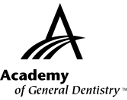|
Exercise No. 363
Subject Code: 674
Fixed Removable Hybrid Prosthesis
The 15 questions for this exercise are based on the article, Stress analysis of mandibular implant-retained overdenture with independent attachment system: effect of restoration space and attachment height, on pages 61-67. This exercise was developed by Robert A. Busto, DMD, MBA, FAGD, in association with the General Dentistry Self-Instruction committee.
|
Reading the article and successfully completing the exercise will enable you to understand the:
- theoretical force distribution on implants and surrounding bone;
- differences between ball and Locator attachments; and
- unfavorable biomechanical scenarios for implant overdenture treatment.
|

